THE ROAD TO CHIMBORAZO – LAST STOP
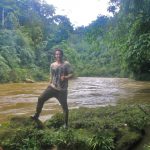
NILS
A couple of weeks ago, a friend and I decided that we wanted to attempt climbing Ecuador’s highest mountain, Chimborazo. With an altitude of 6300 meters above sea level this mountain is an actual giant. Therefore, it was clear from the beginning that prior preparation is needed. For that reason we planned to climb at least one volcano the 3 weeks prior to our desired assent to Chimborazo. This volcanoes are namely Rumiñahui (4631m), Imbabura (4630m) and Iliniza Norte (5126m).
Having reached the end of our preparation journey, this weekend’s challenge was Chimborazo, the closest point to the sun on this planet and 6268 meters high. I have to say that I was quite nervous knowing that this one is going to be a totally different climb compared to the previous ones. Approximately 1.1 km higher, I knew it was not going to be easy.
We left Quito on Friday afternoon towards Riobamba, where we arrived at around 8 o’clock and quickly found a cheap hostel on the other side of the road from the Bus terminal. Since our tour would start at 9.30 in the morning and we knew that we needed all the rest possible, we had dinner and called it an early night.
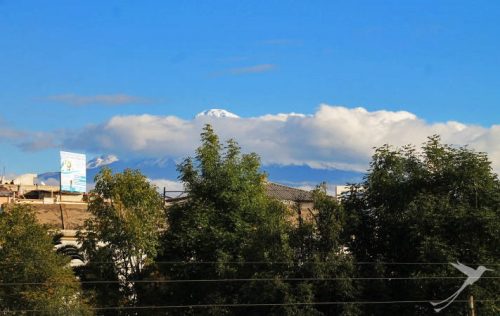
On the next morning we got up early to use the time and get a big breakfast and that’s what we did. We were so exited since the view to the mountain was very clear and it looked incredible towering over the city. After that we walked to the company we booked the tour with to receive our equipment. After a nice welcome we received all the essentials such as crampons, Ice axes, boots, waterproof pants and leashes and left towards the National Park. It takes about an hour to reach the Chimborazo National Park from Riobamba and another 30 minutes to reach the refuge at 4700 meters with a beautiful view towards the highest point on earth (from the center of the planet).
Once we arrived at the refuge, we met out guide Particio and moved into the dorm. By the time it was around 12 o’clock, we got some lunch and afterwards walked up to the Wymper Hutt at 5000 meters to get used to the altitude and the shoes which were surprisingly similar to ski boots so the crampons can be tight onto them. The shoes did not offer a lot of room and flexibility but I guess they were necessary for the ascent.
After we returned from our one hour walk we went to our dorm to relax and recharge until dinner was served at around 5 p.m. However, sleeping in the 20 people dorm during the day did not really work out as planned and I end up just laying down, staring at the sealing of the bunkbed.
Anyways, at five we went for a calorie rich dinner and afterwards we had the briefing on how our night is going to continue. The plan was to lay down for another while and get up at 9 p.m., drink a tea, put on the gear and leave for the summit at around 10. So we watched the beautiful sunset over the national park and then it was off to bed again.
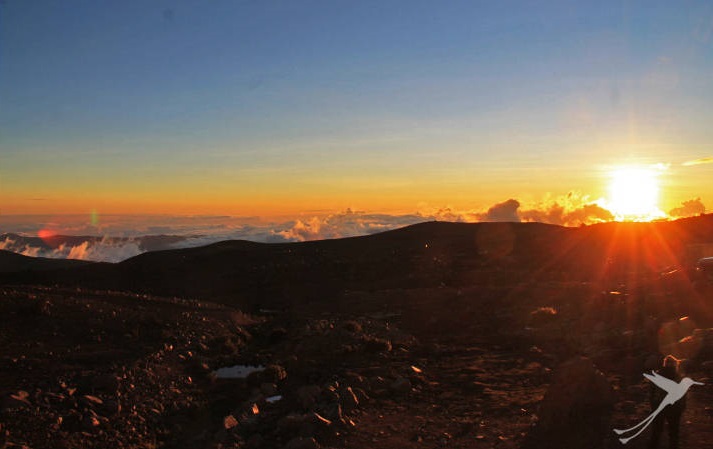
We got up at around 9 and I could feel the anxiety but I was also exited to finally get going since the day lying in bed took forever.
The first our up to the second refuge was really easy, we kept a really slow pace to get used to the breathing, dark and cold which was around -5 degrees Celsius at that point. We reached the Wymper Hutt after approximately an hour and that was where we strapped on out crampons, prepared our ice axes and started the real ascent. From that point on, the guide told us it is going to be a 7-8 hour hike up steep hills to the top and he was not exaggerating.
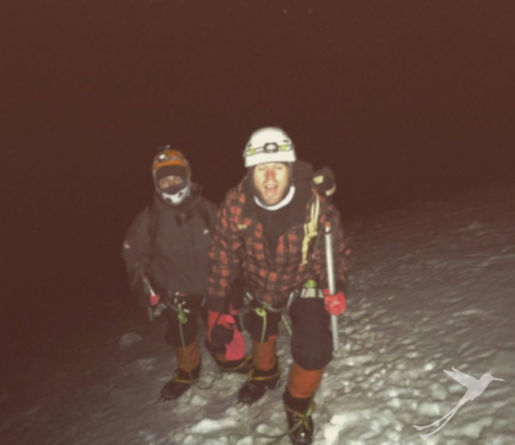
We started hiking and due to the inflexibility of the shoes we had to walk sideways up the mountain since the slopes were too steep to walk up “normally”. The average rise was at 45 per cent with parts being as steep as 65 per cent.
After around 1.5 hours ascending the steep slopes of the mountain I felt the altitude combined with the exhaustion. Every step was painful. We made the first stop behind a huge rock at around 12.30 a.m. and I already felt that this is going to be incredibly hard.
We continues for another hour or so until I felt a slight pain on the site of my head. Obviously breathing got way harder by then since we reached an altitude of around 5.500 meters by then. I decided to continue and see how things will feel higher up. Unfortunately though, every step I felt the pain getting more and more and around 5800 meters me and my buddy became increasingly dizzy and noxious. It was clear that those problems occurred due to the altitude which we were at. We took a little break and talked to our guide who continuously told us how dangerous altitude sickness can get and that the most important thing is to save energy for the descend afterwards. At that point it was 3 o’clock in the morning and to be honest I felt horrible. Breathing became a real trouble, combined with the effects of the altitude sickness and simply the level of exhaustion we took the decision to ascend up to the altitude of Cotopaxi (5890m) and then return to the refuge since we both felt that otherwise we would not make it back.
I have to say that I was really disappointed. However, in those kind of extreme situations it is most important to know you limits and evaluate the risk you are willing to take. Therefore, disappointed as I was we made our way down the slopes of Ecuador’s highest mountain. However, the further we descended the more I felt that the decision we took was the right one. My legs started shaking after halfway and I felt how I fell into that kind of trance mode were I was just walking without thinking or feeling anything.
The descend was way harder than I thought to be honest due to the incredible steep parts which required us to climb down backwards with our ice axes deeply buried into the ice. I remember thinking to myself, that the way we walked up was really far because the way down to the refuge did not seem to end. After another three hours of walking through pitch black with only little visibility due to our head torches we reached the refuge again at 5 in the morning. At that point I was done, mentally and most certainly physically.
So I took if my gear, fell into my back and passed out.
So what can I say in conclusion of this adventure? I think that we definitely underestimated the challenge that we were facing. Even though we did quite a lot for preparation we did one mistake which was not to sleep and spend much time at higher altitude. However, this was one of the most challenging things I have ever done physically and even though we did not make it to the top, we tried and gave everything we had. Nevertheless, I am a little frustrated but that only means, that I have to try harder once I return to Ecuador. All in all the last weekends were amazing, I saw climbed beautiful mountains, hiked through incredible scenery and noticed the vast difference of all the mountains and national parks we have been to.
With that, I am saying goodbye to Ecuador, you have been amazing. The landscape, the people and the plenty of new experiences I made, made the last 5 months an unforgettable journey and I am sure that I will return at some point in my life. Thank you for reading and goodbye.
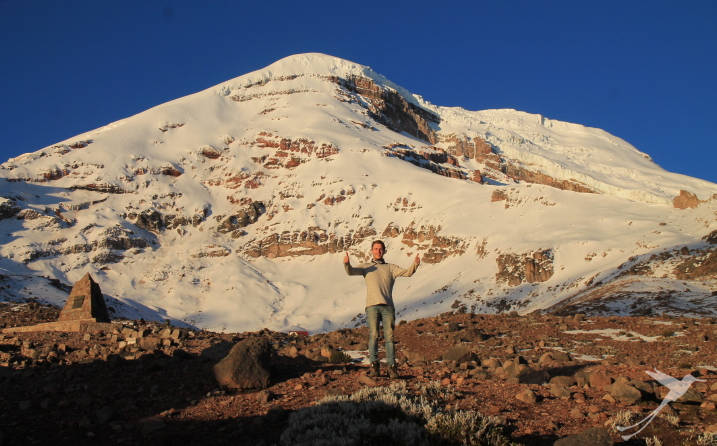
visit our other channels
Recent Posts
- From Manglaralto to Pacoche and surroundings April 18, 2024
- Excursions within the rainforest region of Ecuador April 5, 2024
- Ecuador in a state of emergency?! My personal experience March 22, 2024
- The 10 most beautiful lakes and lagoons in Ecuador – Part 2 March 12, 2024
- The 10 most beautiful lakes and lagoons in Ecuador – Part 1 February 23, 2024